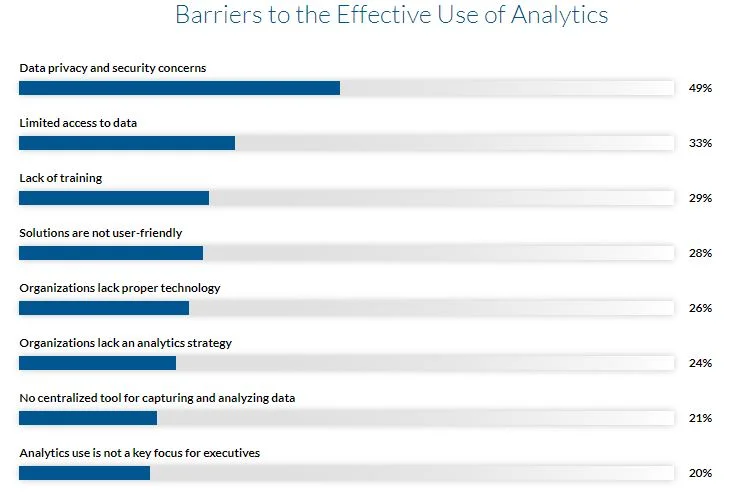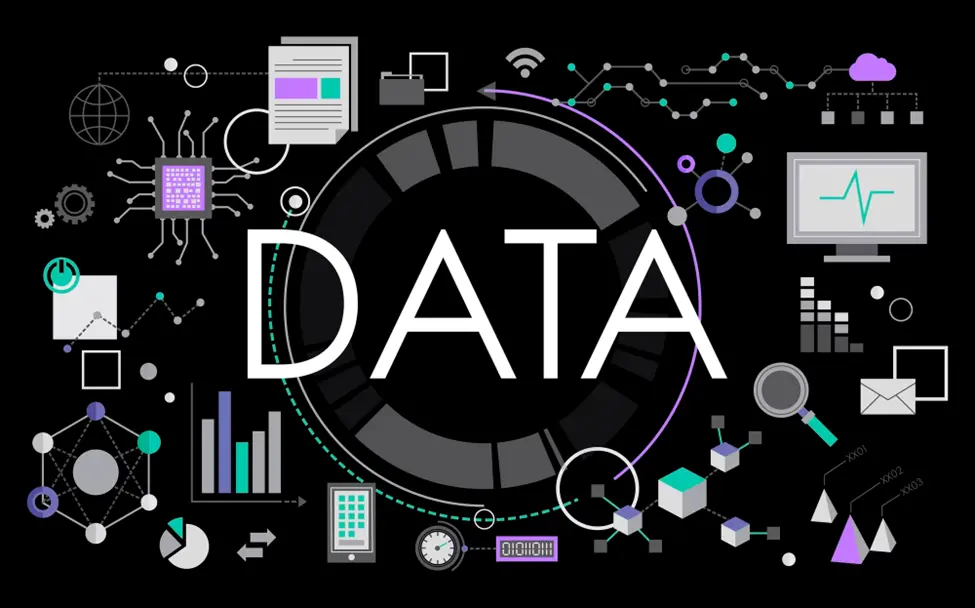More than 1.134 trillion MB of data is created every day. And financial establishments are now capitalizing on this abundance of information. They merge their existing knowledge about their customers with data gathered from various sources. All to delve deeper into the specifics of individual clients and customer clusters. With this knowledge, they tailor their propositions and enable precise risk evaluation to reach a balanced profit and loss statement.
By the end of this article, you’ll explore the immense potential of big data in the finance sector, untangle its complexities, and discover tools and techniques for effective analysis.
Understanding of big data analytics in finance
Big data in finance refers to the massive and complex sets of financial information you can’t manage, process, or analyze using traditional data processing tools. These data streams include everything from customer transactions, market feeds, and social media activity to complex risk models, loan applications, and more.
Big data in the finance industry, like any big data, is characterized by four Vs:
- Volume refers to the immense amount of financial data generated every second. This stems from numerous sources like transactions, market trades, customer details, real-time market feeds, risk models, and social media.
- Variety means financial data comes in many forms. From structured data (transaction logs and customer details) to unstructured data (emails, social media posts, news articles, and more).
- Veracity pertains to the trustworthiness of the data. Incorrect or low-quality data can lead to faulty insights and poor decision-making.
- Velocity stands for the speed at which data is generated, processed, and analyzed. The capability to swiftly analyze data and extract timely insights is key to staying competitive in the financial landscape.
Usage of financial big data analysis
Customer experience enhancement
The survey conducted by Salesforce suggests that 66% of customers expect companies to understand their needs and expectations. 52% of surveyed people also want offers they get to be personalized. At the same time, the financial sector is considered to be the least customer-centric industry.
Big data for financial services can save the day and help companies enhance customer experience. For instance, you may examine data patterns related to customer behavior and preferences to tailor your services to individual clients. This may help you personalize product recommendations, improve communication, and achieve more efficient service delivery.
Risk assessment & management
Forrester’s report on the state of enterprise risk management found that 41% of organizations experienced three or more critical risk events within a year. 27% of decision-makers admitted that enabling innovation, which includes big data, was one of the most critical issues that led to ineffective risk management.
So, big data analysis is instrumental in refining risk assessment and management practices in finance. Large-scale data analysis can help identify and quantify risks. Thus, it allows financial institutions to make informed decisions about loans, investments, and other risk-related aspects of their operations.
Fraud detection & prevention
91% of financial institutions admit that fraud rates have increased within their organizations. As a result, 70% of companies lost from $500 thousand to $10 million dollars.
With finance data analytics, these companies can look at patterns and anomalies in large data sets to enhance their fraud detection and prevention capabilities. They can identify suspicious activities in real-time and immediately respond to them to protect both the institutions and their customers.
Regulatory compliance
The operating cost spent on compliance has increased by over 60% for banks. That is why many financial institutions are looking for ways to improve regulatory productivity (meet compliance requirements at lower costs). Financial big data analysis can be an answer to the heavy burden of compliance optimization. Through the analysis of complex data sets, companies can reveal insights into regulatory requirements, which would aid in reporting, record-making, and ensuring institutions meet their legal obligations.

Challenges and opportunities in big data in the finance industry
While big data analytics promises much to the finance sector, it still has its problems. According to the MicroStrategy survey, companies are concerned with the following challenges associated with the use of big data analytics.

Additionally, other concerns around big data analytics are related to governance (41%) and slow data ingestion (31%). The flexibility of current data solutions is a problem for 49% of executives.
Below, we’ve gathered key challenges financial companies face when they leverage big data analytics and the opportunities you can tap into if you overcome these hurdles.
| Challenge | Opportunity |
|---|---|
| Security and privacy of sensitive financial information | Customer trust |
| Data quality and accuracy | Reliable insights that drive effective decision-making |
| Integration and management of diverse sets of data | Comprehensive analyses with a holistic view of customers and markets |
| Talent acquisition | Leverage big data to its full potential for strategic growth and competitive advantage |
| Real-time processing | Instant insights for quick decision-making |
Empowering finance big data analysis with tools and techniques
Data collection & integration
Data harvesting (also known as collection) and integration are key components of the effective analysis of financial data. These are the tools that are most commonly used for these tasks:
- Apache Hadoop is a framework that allows for the distributed processing of large data sets across clusters of computers.
- Apache Kafka is a real-time data streaming platform for building real-time data pipelines and streaming apps.
- Informatica, Talend, and AWS data pipeline are ETL (extract, transform, and load) tools for extracting information from various sources, transforming it into a structured format, and loading it into a data warehouse for further analysis.
Data analysis & machine learning
Data analysis and machine learning are at the heart of big data analytics for financial services.
- Python and R, with their vast array of statistical and machine learning libraries, have become the go-to choice for data analysts and data scientists.
- Google’s TensorFlow, Microsoft’s Azure Machine Learning, and the open-source library Scikit-learn are machine learning platforms that allow to develop algorithms that learn from and make decisions based on data.
Cloud computing & distributed processing
When it comes to cloud and distributed processing for data analysis finance, these are the tools that are most frequently used among big data specialists:
- Amazon Web Services (AWS), Microsoft Azure, and Google Cloud platforms provide scalable, on-demand data storage and computing power.
- These platforms support distributed processing frameworks like Apache Spark and Flink, which are specifically designed for fast, large-scale data processing and analytics.
- Cassandra and MongoDB are distributed databases that handle large volumes of data with no single point of failure.
Conclusion
As we continue to generate data at an unprecedented pace, the significance of big data analytics for financial services will only grow. With it, companies will enrich customer experience, bolster risk management, strengthen fraud prevention, and streamline regulatory compliance.
If you are concerned about data security, data quality, data management, talent acquisition, and real-time processing on your way to effective data use, get help from Nannostomus. With vast experience in data collection and wrangling, we’ll ensure you get powerful insights for decision-making as soon as possible. Let’s discuss your project to see how we can help you.




